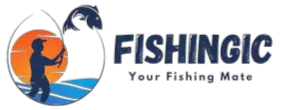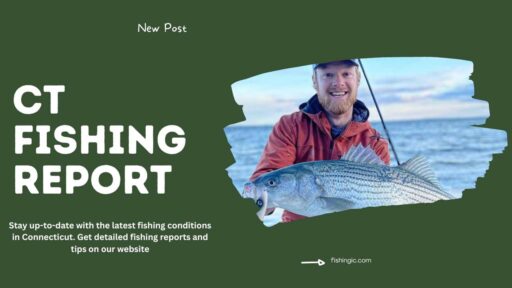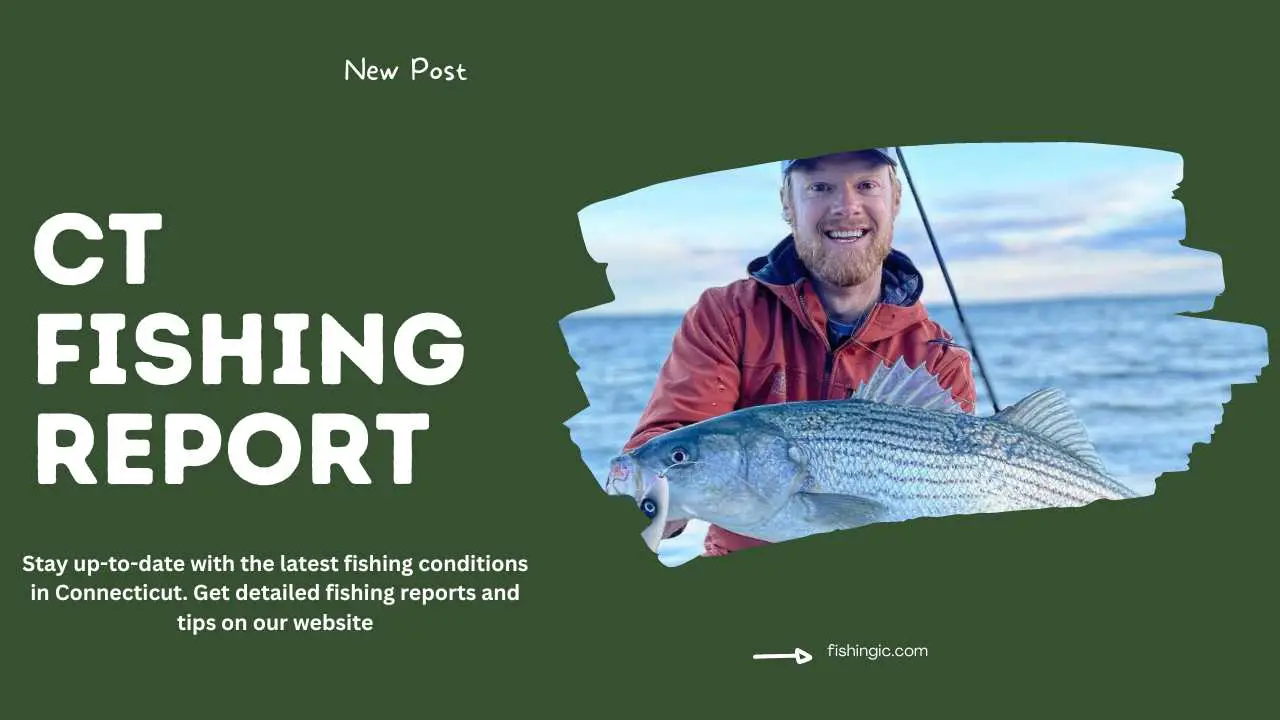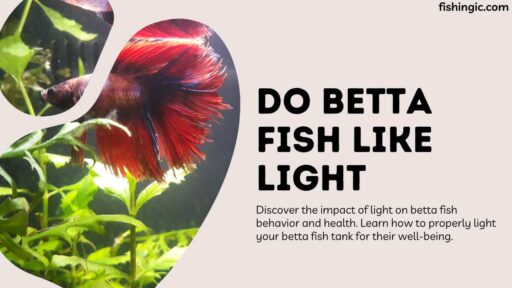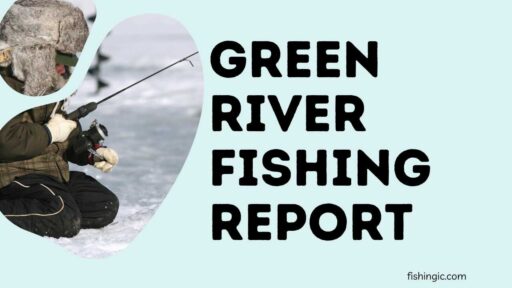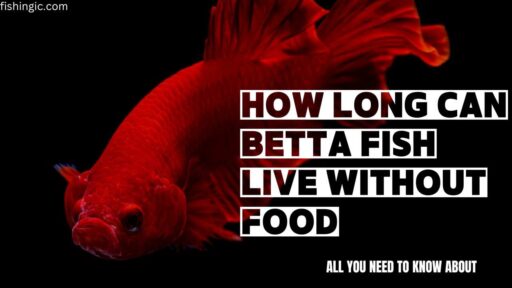Stay up-to-date on the latest fishing conditions in Connecticut with our comprehensive CT Fishing Report. Find the best spots and tips for a successful fishing trip!
Introduction to the CT Fishing Report
Being a person who enjoys fishing very much I know that there is nothing more exciting than planning for a fishing trip. As anglers, it is important to keep up with the latest fishing reports whether you are just starting out or experienced in the field. This guide will overview CT Fishing Report. It will explain their importance and give tips on staying ahead.
Current Fishing Conditions in Connecticut
Fishing in Connecticut does not stand still and varies greatly with ebbing and flowing seasons. Spring brings back many migratory species that have been away, making it a great time for both freshwater and saltwater anglers. The state has many lakes, ponds, and streams. They provide an abundance of bass, trout, and panfish. Offshore along the coast, there are also striped bass, bluefish, and flounder.
Seasonal Variations
Winter is slowly breaking up. This brings many chances for angling. The peak season for stocking trout is in early spring. Bass, perch, and pickerel like warmer water. They become active in shallow areas as temperatures rise. By mid-summer, native species’ populations peak, creating great angling conditions.
Popular Fishing Spots
Connecticut offers many popular fishing spots. Each spot has different types of fish. The Housatonic River is known for smallmouth bass. The Farmington River has many brown trout and rainbow. Long Island Sound has many fish. They live in saltwater, including the Thimble Islands. There, striped bass and bluefish can be caught.
Recent Catches
Anglers have had a range of impressive catches this season. Inland waters have many largemouth bass and pike. Reports say many trophies have been caught there. On the coast, there have been big runs of stripers. The fluke action there is intense. This success bodes well for the peak of fishing season in the coming months.
Importance of Staying Updated with Fishing Reports
There are several reasons why it is important to keep up with fishing reports. First, they help you understand what is going on in Connecticut regarding fishing. They have info about water temperatures, water clarity, and fish behavior. This info can greatly impact your chances of catching fish. To use time well, check for updates on these reports. You need to know where to go when you go fishing.
Secondly, reading a fish report could save some time for you. Instead of looking around aimlessly hoping to find a right place for fishing, it can be used as a way finding oneself. You will get an idea of where the fish are biting and which baits or lures are getting the most interest from them. With this knowledge, you are more likely to catch fish. This will increase your productivity on outings.
Lastly, through sharing experiences and observations, anglers create a sense of community. A person can read FISHING REPORTS to meet like-minded individuals and learn from their experiences. They can also make new friends who also enjoy recreational angling.
How to Read and Interpret a Fishing Report
While a fishing report can seem daunting to read and interpret, continued exposure to it will make it second nature to you. Such reports often contain the date, location, targeted species of fish as well as the methods used. They may also include information on how many fish were caught and any notable observations or trends.
As you read a fishing report, pay attention to the date. Fishing situations can change very fast, and what was true last week may not be true this week. To get the latest data, look for recent reports. Another thing to check is the source of this information. Anglers are usually trusted more than old or unverified sources.
Understand specific fishing terminologies when interpreting a CT fishing report. Words like active, slow, or picking up give insights into fish behavior and overall fishing conditions. Knowing what these terms mean in context will help you decide where and how to fish.
Best spots for Fishing in Connecticut
From rivers and streams to lakes and ponds, Connecticut has a wide range of fishing spots. Whether one prefers freshwater or saltwater angling, there is something for everyone here. Below are some of Connecticut’s finest places to fish:
The Housatonic River is known for its great trout population. Anglers love it, too. Furthermore, catching bass and pike, among other species, is possible.
Candlewood Lake is among the largest lakes in Connecticut. It’s great for bass fishing in summer because it has clear waters with many structures that attract big prizes.
Long Island Sound: Long Island Sound should be your destination if saltwater angling tickles your fancy at all due to having striped bass, bluefish, and fluke, among other numerous species of fish.
Farmington River: A fly-fishing destination popularly known as Farmington River, which has been stocked with trout, affording amazing scenery and making it an ideal choice amongst fishermen.
It is also necessary to review the local regulations and obtain any permits required before you start fishing in these locations. Additionally, always practice responsible angling by respecting catch limits and releasing fish unharmed whenever possible.
Techniques for Different Seasons
You should adjust your techniques and strategies with the season to increase your chances of success. In Connecticut, for instance, there are four distinct seasons, each offering different opportunities for fishing. Here are some seasonal fishing techniques and tips that will come in handy during each season:
Spring
With the warming water temperature in spring, fish become active. Possibility of fish spawning exists in shallow areas like coves or backwaters. Use bait that looks like natural food of target fish such as lures or baits. As hungry fish may bite fast, make slow retrieves on your bait to encourage them take a bite at it. Fish mostly when they are most active; that is early morning or late afternoon.
Summer
Fish retreat deeper into cooler waters as heat descends upon summer. Rock formations beneath the water surface, fallen trees, or even weed beds offer hiding places and sources of food for fish species, hence good grounds for identifying productive places to drop a line. Early morning or late evening toaster lures can attract some surface-feeding species, while live bait can be used to trick them, too. When the sun is high, try other parts of the lake using jigs or heavy-weight baits.
Fall
Autumn is a good season for fishing as fish become more active in preparation for the coming of the cold weather. Target areas with changing foliage or near tributaries where fish migrate in search of food. Use natural-colored lures or live bait to imitate the abundance of prey available in the water. To find what works best, experiment with different retrieval speeds.
Winter
Winter fishing in Connecticut can be challenging, yet rewarding. Fishing on ice is one of the most common activities during this period. Look for frozen lakes and ponds that have at least four inches thick ice layer. Use small jigs or bait tipped with maggots or worms to entice bites from sluggish fish. Check ice conditions before venturing out; prioritize safety at all times.
By adjusting your techniques and strategies according to the season, you can increase your chances of success and enjoy fishing all year round.
Understanding the Different Fish Species in Connecticut
Connecticut houses various fish species that require different approaches and techniques respectively; here are some:
- Trout: This state has excellent trout fishing opportunities. Rivers, streams, and lakes are regularly stocked by the state with different kinds of trout, such as rainbow trout, brown trout, and brook trout, that thrive well there, making fly-fishing, spin-fishing, and bait-fishing highly effective ways of catching them.
- Bass: Largemouth and smallmouth bass are abundant in Connecticut’s lakes and ponds. Submerged structures are targeted, and various types of lures are used, including crankbaits, soft plastics, topwater baits, etc.… There is much year-round bass fishing, but summer months are especially productive.
- Striped Bass: If you enjoy saltwater fishing striped bass should be on your radar because they grow big in size and provide an exhilarating fight; catch them around coastal areas, jetties or river mouths using live baits ,lures or even fly fishing techniques.
- Pike: In Connecticut’s rivers and lakes, there are northern pikes. They are known for their aggressive strikes and powerful runs. Use large swimbaits, spoons or live bait to get a bite from pike. Look for areas with submerged vegetation or structure.
These are just a few examples of the fish species you can target in Connecticut. Every species has its own habits and preferences, so it is crucial to research them because that increases your chances of success.
Equipment and Gear Recommendations
To have a successful fishing trip, the right equipment and gear are essential, here are some recommendations for fishing gear in Connecticut:
- Rod and Reel: Select a rod and reel combo that matches the species you plan to target. For trout and bass fishing, choose medium-action spinning rod & reel which is versatile. In case of saltwater fishing go for medium-heavy spinning or baitcasting setup.
- Fishing Line: Select monofilament or fluorocarbon fishing line with appropriate pound test rating depending on what kind of fish you’re after; big game fish need heavier line while trout as well as bass prefer lighter lines.
- Baits & Lures: Carry different baits and lures for various situations during your fishing expedition – such as small spinners, spoons, artificial flies if you want to go trout-fishing; soft plastics , crankbaits , or even toaster lures if you wish to target bass; live baits ,jigs or swimbaits when saltwater fishing.
- Tackle Box: Make sure to arrange your lures, hooks, sinkers and other fishing accessories in a tackle box. This will ensure that all the necessary items are kept within reach and save you needless time for searching for tackle.
Remember some things about local regulations on fishing bait use, hook sizes, limits of catch, and others. The environment should be respected by not leaving any fishing line or litter around and releasing fish if possible.
Safety Tips for Fishing in Connecticut
Fishing is generally an enjoyable activity that is considered safe, but safety must be given priority in order to avoid accidents from occurring during the activity, thus ensuring a positive experience. Below are some safety tips when fishing in Connecticut:
- Wear a Life Jacket: Always put on a well-fitted life jacket whenever you go out fishing by boat or kayak. Accidents can occur suddenly and this therefore gives you a chance to survive if the boat capsizes or one falls overboard.
- Know the Weather Conditions: Before going out check how the weather is expected to behave anytime soon. Don’t risk going fishing during harsh weather conditions like thunderstorms, gales or extremely high temperatures. Prepare for changing weather conditions and dress accordingly.
- Use Sun Protection: Put on sunscreen, sunglasses, and a hat to shield yourself from harmful UV rays. When fishing for long periods, apply sunscreen repeatedly. To avoid dehydration, stay hydrated by drinking enough water.
- Be Aware of Your Surroundings: Be observant of your surroundings especially if you are angling near fast flowing currents or on slippery surfaces. There may be dangerous submerged objects below the surface of water too, strong currents or unsteady grounds so take appropriate measures to prevent any accident from happening.
- Follow Fishing Regulations: Get familiar with local regulations regarding fishery matters which include size restrictions, catch limits and seasonal closures etc. These rules help conserve fish populations and keep environment intact for future generations.
Following these safety tips will enable you to have a safe and enjoyable fishing experience in Connecticut.
Additional Resources for Fishing in Connecticut
Aside from the CT fishing report, there are a few things that anglers can do to increase their knowledge and skills. Here are some more resources for fishing in Connecticut:
Connecticut Department of Energy and Environmental Protection (DEEP): Go to DEEP’s website to find information about fishing licenses, regulations, stocking reports, and fishing events in Connecticut. They also provide educational materials and maps of fishing spots.
Local Fishing Guides and Charters: One option is hiring a local fishing guide or charter service for insider knowledge and expertise. They might bring you to those great spots for angling as well as offer valuable tips suitable for that area.
Online Fishing Forums and Communities: Join online forums or communities where fishermen interact with each other, inquire about what they know, and share your findings. These platforms enable an individual to learn from others and discover new places to fish while keeping up-to-date on the latest trends.
Fishing Books and Magazines: Expand your knowledge on this topic by reading specialized books or magazines regarding angling. Topics covered often include techniques, gear recommendations, along with personal tales told by experienced anglers.
You can always take advantage of these resources in order to improve your fishing abilities and make the most out of the time you spend angling.
FAQs
Do I need a fishing license to fish in Connecticut?
Yes, you need a fishing permit to fish in Connecticut if you are 16 years old and above. These licenses can be bought online or from authorized dealers.
Can I catch and keep fish in Connecticut?
Yes, you can catch and keep fish in Connecticut but there are rules that govern the same which include; legal size limits of breeders, allowable quota or number of fishes that an individual is allowed to harvest as well as time restrictions for fishing activities. To ensure you operate within these limits, it would be important that you understand these regulations.
Are there any fishing tournaments in Connecticut?
Yes, several fishing tournaments take place annually in different parts of Connecticut. The competition gives you an opportunity to face off against other anglers with the hope of bagging some prizes for yourself. This information may be obtained by visiting local fishing organizations or websites.
What is the best time to fish in Connecticut?
This will depend on the kind of species one wants to go after and also the season when one would wish to do so since different types of fish have their own feeding preferences. Therefore, making use of this knowledge will increase your chances of success. Typically, early morning hours as well as late afternoon time result in more bites. Nonetheless, each type has its own unique patterns for feeding, so research and wisdom will be your best guides through this process.
Conclusion
With our comprehensive CT fishing report at your disposal, we give you all that is necessary for pre-planning before engaging yourself in such activities, ensuring maximum returns from those trips within this jurisdiction. Increasing your odds through staying connected with the latest reports while knowing how they should be interpreted, and finding out where people go during specific competitions could promote more catches as well as memorable outings simultaneously involving one’s self with seasonal variations linked up with these animals’ behaviors and always put safety first in anything done here.
You’ll get there in the end – practice and experience will soon make you the best fisherman on Connecticut shores. Good luck!
CTA: Start planning your next fishing adventure in Connecticut today and stay ahead of the game with our comprehensive CT fishing report. The latest fishing reports can be found at our website, as well as information about new spots for successful fishing and some useful tricks to help you enjoy your time on the water more.
